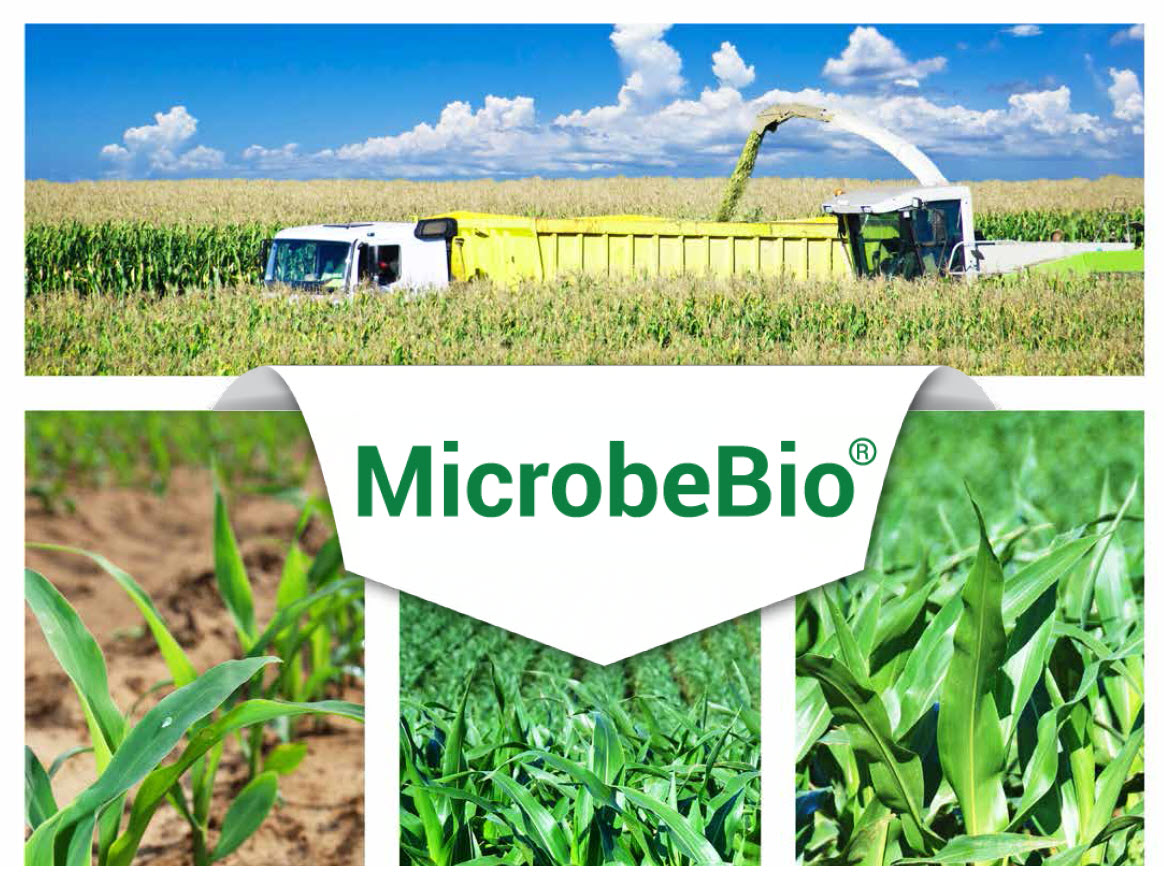Rice Field - Soc Trang - Vietnam Jun 16 2022
Using Microbebio Fertilizers, Soil Enhancer
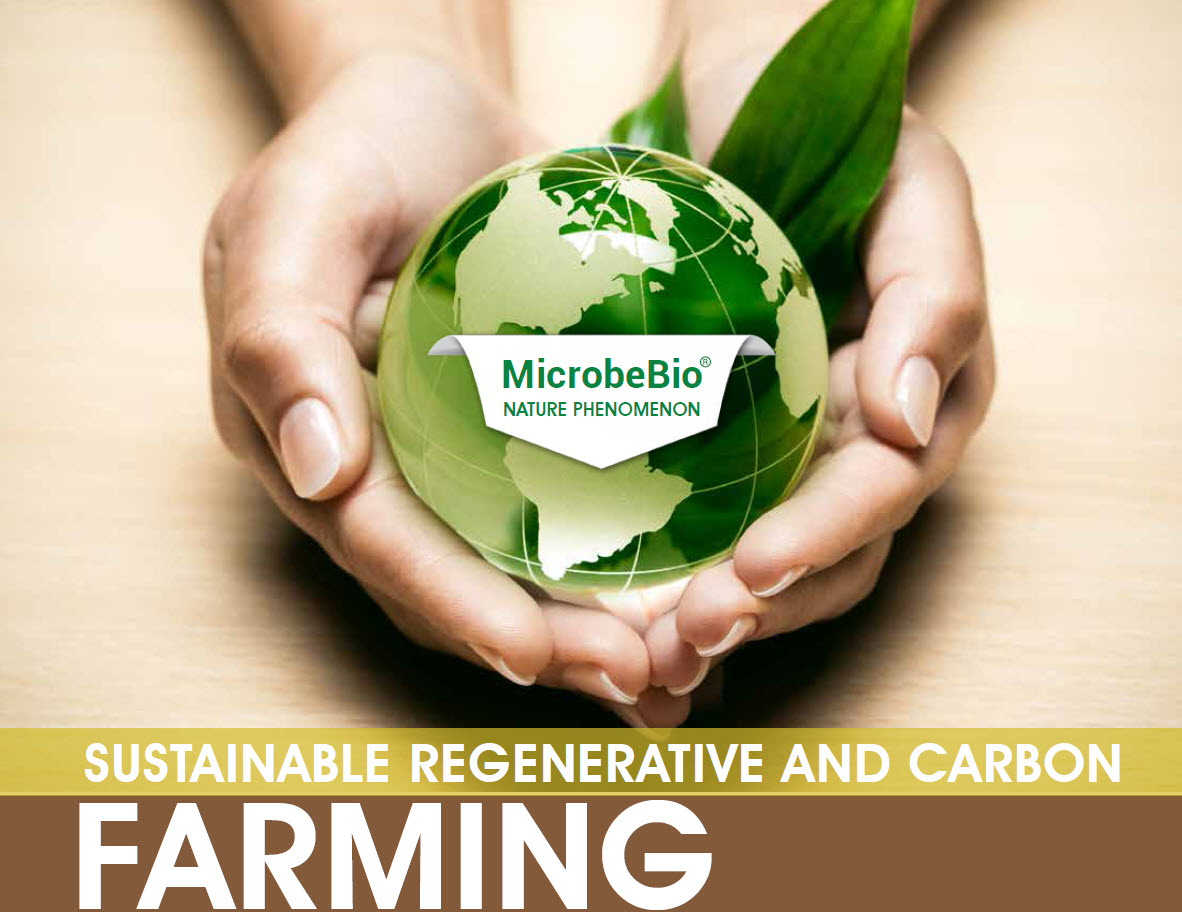
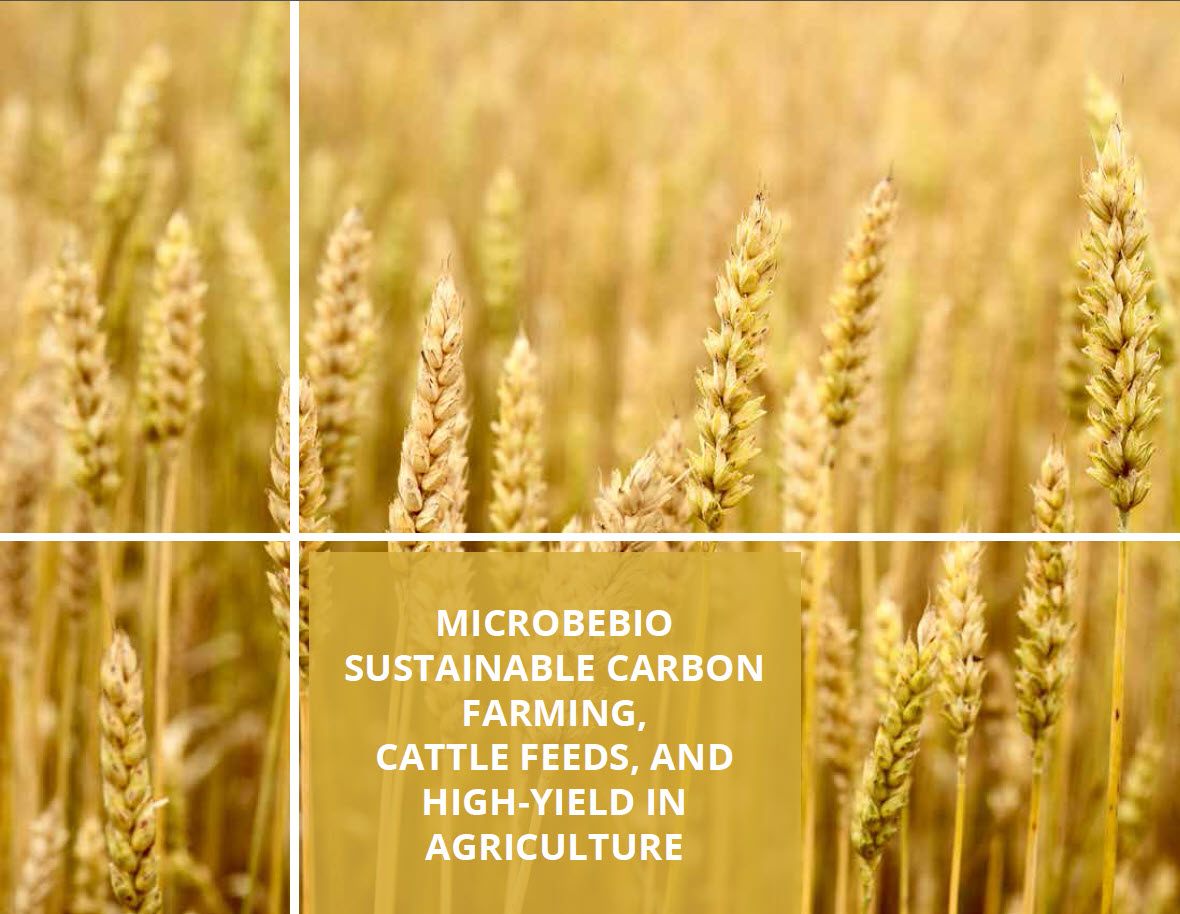

MICROBEBIO SUSTAINABLE CARBON FARMING,
CATTLE FEEDS, AND HIGH-YIELD IN AGRICULTURE
Agroecosystems constitute more than one-third of the world’s arable land, and they contribute 10–14% of global anthropogenic greenhouse gas emissions, primarily from enteric fermentation (methane), application of synthetic fertilizers (nitrous oxide), and tillage (CO2). However, Microbebio agricultural ecosystems also have the potential to store a vast amount of soil carbon Microbebio product methodology Agriculture is the ONE method that can transform from a net emitter of CO2 to a net sequestered CO2 —there are few humans managed realms with this potential. Numerous land management practices can be adopted to increase soil carbon storage in agroecosystems, such as changes in crop rotations,
tillage, and organic nutrient and biological diversity management. Maybe the most effective means for increasing soil carbon sequestration is through changing the practice and management of crop and biological management. Microbebio’s alternative option is to select and design annual crop plants, nutrients, and biologically in the soil that allocate more carbon to belowground biomass and root exudates or rhizodeposits. An improved soil carbon storage serves the dual purpose of promoting soil health, which supports crop productivity and constituting a pool from which carbon can be converted to recalcitrant forms for long-term storage as a mitigation measure for global warming.
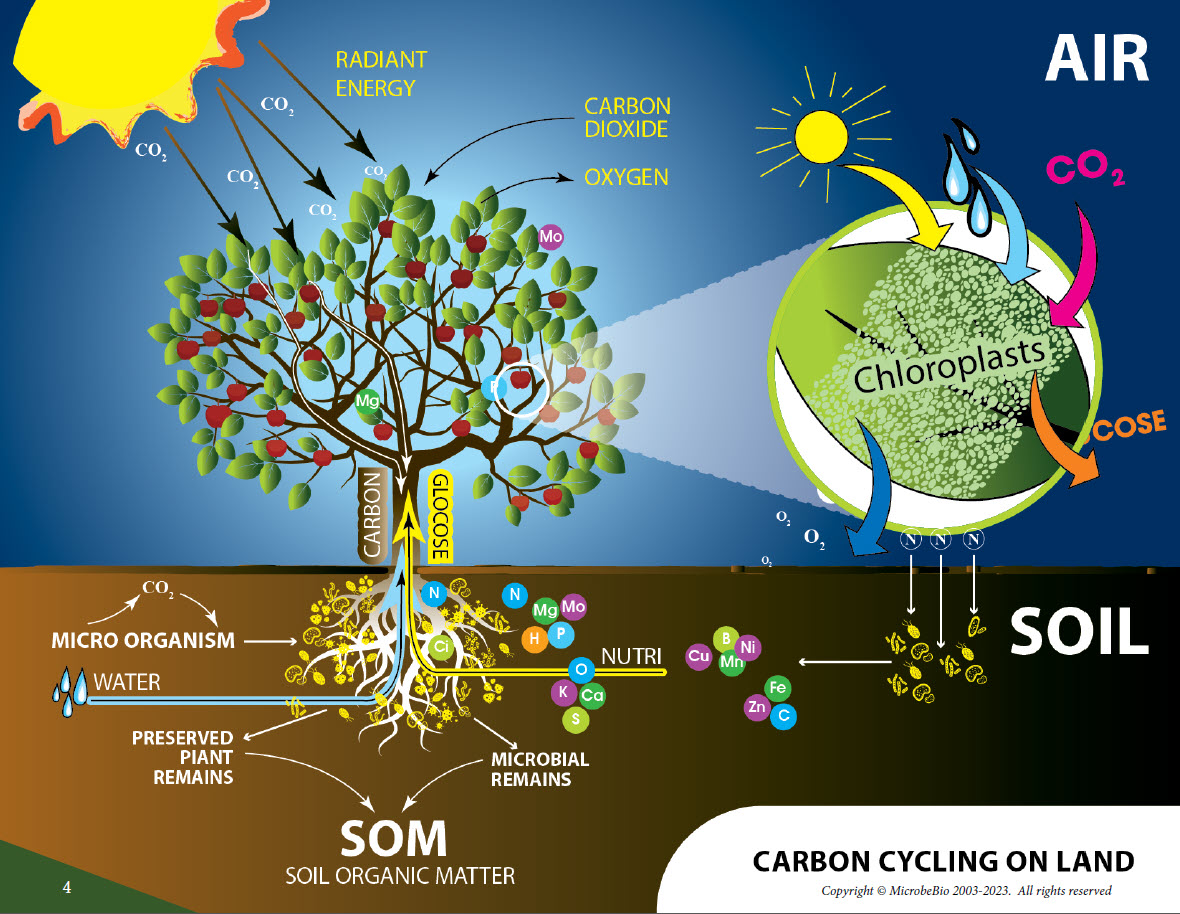

Microbebio is formulated with the full spectrum of trace minerals and amino acids that activate and energize with Hydrogen and Oxygen, enhancing soil environments electrically, biologically, and synergistically. It is charged by our proprietary kinetic energy technology functioning at the cellular level enabling maximum seed germination, improving the rate of enzyme activity, enriching land conditioning & mineral, provide optimal conditions for soil microbial to flourish. Microbebio aids in cellular growth and helps to regulate the uptake of nutrients. Protect against pathogens and disease. Maximize plant vigor and Increase yield and quality. Microbebio is derived from living organisms. They are used in agriculture to enhance soil fertility, protect crops and enhance overall plant health. MicrobeBio differs from traditional fertilizer, pesticide, and fungicide products because it comes from natural sources. It can be used to replace synthetic chemicals on farms or complement them as part of a comprehensive crop management program.
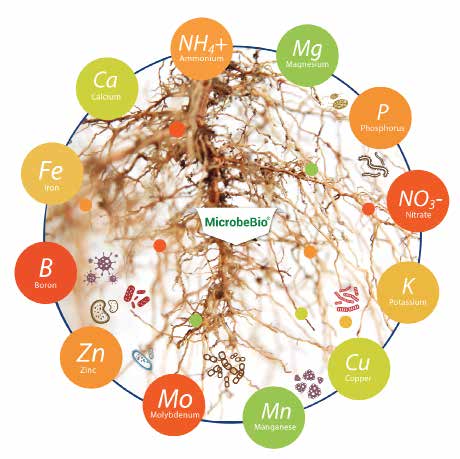
MICROBEBIO RELEASE TIED-UP NUTRIENTS
Although nutrients like nitrogen, phosphorus, and potassium are already present in large quantities in the soil, they are locked up in a form inaccessible to plants. Microbebio stimulates the soil’s fertility to harvest nutrients and release them to plants. Traditional fertilizers require fossil fuels to manufacture and work by suppressing life in the soil and leaving behind dead soil. Vital Nutrients are lost and underutilized, silently eroding the vitality and health of your operations and introducing disease in the process. Microbebio restores life to dead soils. It is stimulating microbes to break down and recycle old plant matter and nutrients locked in the soil. This promotes nutrient cycling, which benefits soil health and plant regrowth.

CONVERTING THE SUN INTO PROTEIN
Microbebio enables plants to absorb more sunlight, increasing chlorophyll production in the grass. The more light absorbed, the more sugars (Brix) and carbohydrates can be stored in the leaves, making the plant greener. Excess sugar production exudes from the roots and feeds microbial activity in the soil. As a result, animals fed MicrobeBio grass consume more calories while consuming less grass. This results in increased efficiency and capital expenditure. MicrobeBio enhances the growth of cows by catalyzing the interaction of sunlight, air, and soil.
GRASS GROWN WITH MICROBEBIO IS BETTER FOR THE HEALTH OF COWS & PEOPLE.
Beef grown with MicrobeBio is a nutritional powerhouse, having more healthy Omega-3 fatty acids (alleviates Arthritis and decreases inflammation, helps with depression and mental well-being, helps you focus), conjugated linoleic Acid (CLA) (responsible for reducing the risk of heart disease and fighting cancer), Vitamin B6, Vitamin E, beta carotene (Vitamin A) (suitable for eyes) and other known disease-fighting antioxidants (copper, zinc, etc.). Beef grown with MicrobeBio has an ample amount of 3 essential electrolytes and fewer bacteria compared to grass grown with traditional fertilizer.

There are many reasons to choose beef that has been fed with MicrobeBio grass. It is not only good for people, but also for the planet. The beef is less fatty and juicier, and it also tastes better. But how do we get these benefits from eating beef? One option is to eat rocks, but the other, safer option is to eat the right food. Plants take up minerals from the soil to help build complex molecules they need for growth, respiration, and photosynthesis. So we get minerals when we eat those plants or when we eat animals who have eaten those plants. By choosing beef that has been fed with MicrobeBio grass, we can be sure that we are getting all.
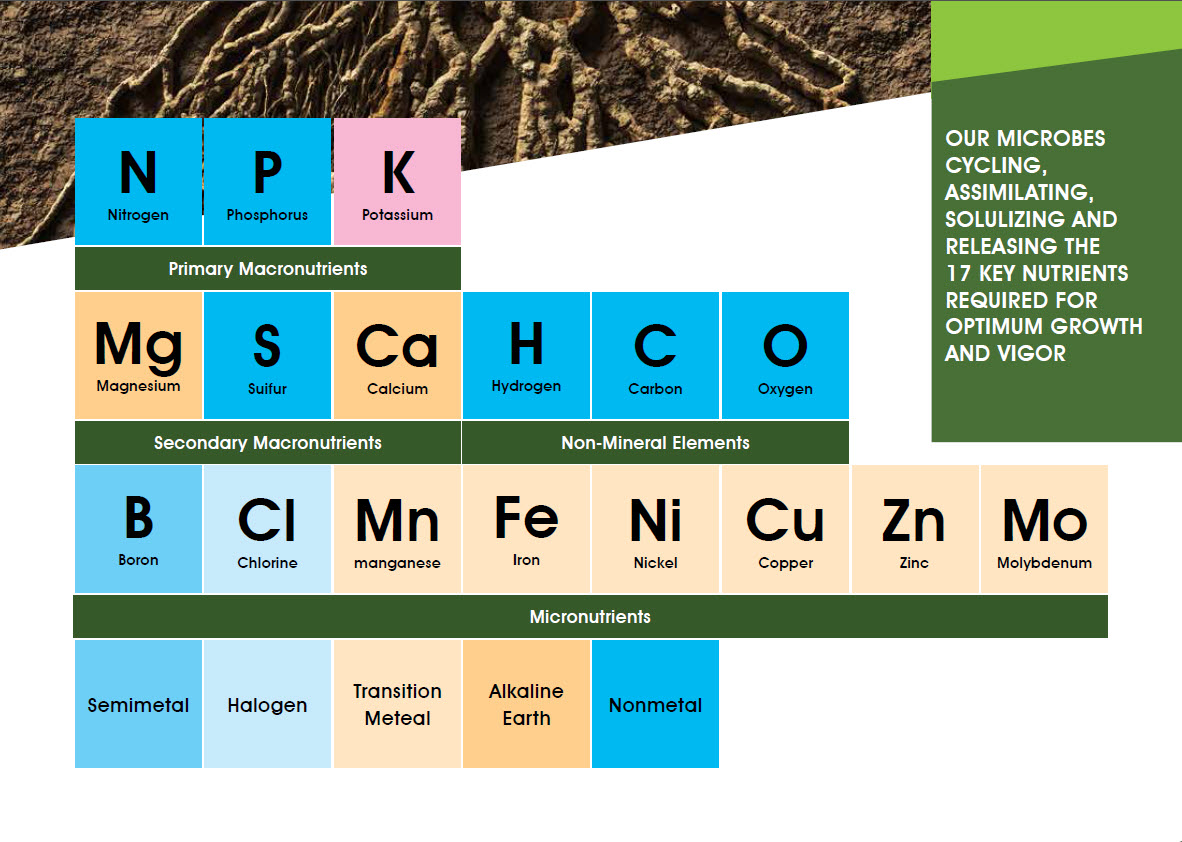
THE IMPORTANCE OF TRACE MINERALS
Trace minerals are essential for cattle’s immunity, health, metabolism, and reproduction. Some act as antioxidants, such as copper, selenium, manganese, and zinc. Trace minerals, like DNA, are responsible for characteristics like strong bones, muscle development, skin, and coat health.
Some obvious signs of trace mineral deficiency are poor nutrient uptake, low energy, and lack of color, smell, or taste. People who eat them are more prone to getting sick.
MicrobeBio provides a balance of proprietary nutrients to target specific microbes to work in the soil. They are effectively releasing more nutrients to plants.
Grass grown with MicrobeBio grows faster and has larger biomass, greater leaf area, higher crude protein,
more energy, more color, and a sweeter taste. Cows are immediately more attracted to grass grown with MicrobeBio than traditional fertilizers.
MICROBEBIO IS YOUR CLIMATE SOLUTION
MicrobeBio is your partner in lowering your carbon footprint. Giving more intelligence per acre while putting less pressure each season. MicrobeBio works with the life in the soil to reduce soil compaction, resulting in less tilling and lower fuel costs. By improving the soil, it uses less fertilizer and eventually eliminates petrochemicals. Using mother nature’s wisdom, you can unlock better crop performance today and supercharge it for the future. MicrobeBio is your climate solution, bringing the future to you right now. Microbebio product integrates nanomaterials of essential vitamins, amino acids, and primary, secondary, and trace minerals which guarantee that it is highly

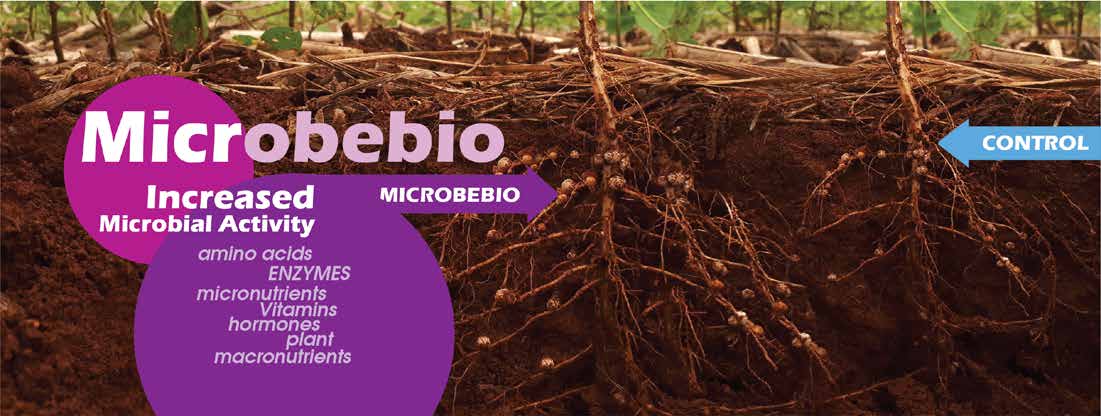
bioavailable and versatile for practical use as a foliar or soil application for optimal plant vigor and naturally restoring soil biology. The nutritional significance of amino acids, vitamins, and minerals as nutraceuticals in animal feed production and health, and our Plant Nutrition products allow farmers and growers to address crop needs with advanced precision, resulting in exceptional crop health, quality, quality, and yields. The abundance of trace minerals that Microbebio products provides functions as cofactors that facilitate all of the enzymatic functions of the plant, therefore producing plants that grow to a higher genetic potential. Microbebio products complement our beneficial microbes with a
high-performance, high-quality catalyst for an optimal environment for exponential microbial population growth.
VITAMINS: Vitamin A, Vitamin B-6, Vitamin B-12, Vitamin C, Vitamin D, Vitamin E, Thiamine, Choline, Folic acid, Riboflavin, Biotin, Pantothenic acid
AMINO ACIDS: Alanine, Arginine, Aspartic acid, Cystine, Glutamic acid, Glycine, Histidine, Isoleucine, L-carnitine, Lysine, Methionine, Phenylalanine, Proline, Serine, Threonine, Tryptophan, Tyrosine, Valine
DYNAMIC MINERALS: Thallium, Thorium, Titanium, Tungsten, Vanadium, Ytterbium, Magnesium, Zinc, Calcium, Sulfur, Selenium, Copper, Potassium, Bromide, Calcium, Fluoride, Silicon, Nitrogen, Selenium, Phosphorus, Iodine, Tin, Lanthanum, Yttrium, Barium, Silver, Uranium, Gallium, Zirconium, Vanadium, Praseodymium, Beryllium, Tellurium, Bismuth, Hafnium, Terbium, Europium, Gadolinium, Samarium, Cerium, Cesium, Gold, Dysprosium, Holmium, Lutetium, Thulium, Erbium, Ytterbium, Lithium, Chromium, Iron, Manganese, Titanium, Rubidium, Cobalt, Copper, Antimony, Arsenic, Molybdenum, Strontium, Zinc, Nickel, Tungsten, Germanium, Aluminum, Scandium, Neodynium, Niobium, Tantalum, Thorium, Thallium, Rhenium, Sodium, Tantalum, Tellurium, Terbium
NPK – The nitrogen in NPK fertilizer helps help plants to grow leaves. Phosphorus, by contrast, helps to produce healthy flowers, buds, roots, and fruits. Plants use potassium to help sustain overall plant health.
Seaweed: Seaweed has a long history of use in agriculture and horticulture. It is an excellent source of nutrients for plants, and can also help to improve soil structure and promote plant growth. Seaweed extracts can be used as a natural insecticide and fungicide, and are effective against a wide range of pests and diseases. Seaweed products are safe for use around children and pets and are completely biodegradable.
Containing complex carbs and vital minerals, seaweed extract delivers every plant with the valuable nutrients needed to grow and thrive. Seaweed has a broad and balanced range of nutrients, containing more than 70 minerals, vitamins, and enzymes. As most plants will absorb nutrients through their leaves, applying foliar spray will increase the benefit to the plant.
Si – Besides a structural role, silicon may protect plants from insect attack, disease, and environmental stress by improving the plant defense response. For some crops, silicon fertilization of soils increases crop yield even under favorable growing conditions and without disease. Silica improves a plant’s ability to survive and even thrive in high-salinity areas. Silica improves plant photosynthesis and aids in the plant’s uptake of nitrogen, phosphorus, potassium, zinc, and molybdenum.
Humic Acid: While humic acid is most commonly associated with its benefits for plants, it also plays an important role in soil health. By increasing microbial activity and nutrient availability, humic acid can help to improve soil structure and fertility. In addition, humic acid can help to increase drought tolerance and seed germination. By using products that contain humic acid, we can improve the health of our soil and ultimately achieve healthier plants and better yields.
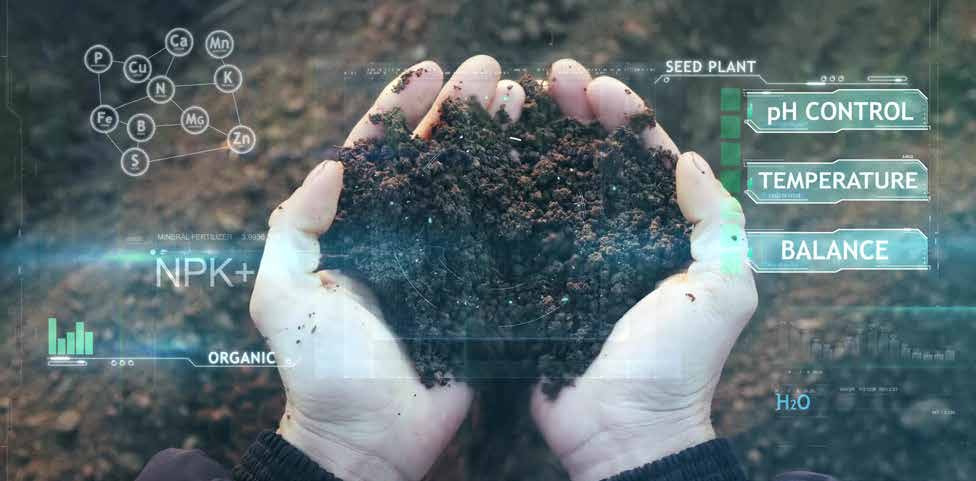
Humic acid buffers soil pH to 5.5 to 7.5, which is ideal for plant development and nutrient absorption. Thus acting as a natural chelator, they help plant roots to absorb nutrients more efficiently to create a long-term positive effect on soil quality and productivity.
VITAMINS:
Vitamins are organic substances that are present in minimal amounts in plants. Similar to the effects on humans, Vitamins benefit plants in many ways. They
are essential for normal metabolism and basic plant functions and serve a beneficial role in plant growth, health, and development. Vitamins also work in soils to enhance helpful bacteria vigor. This directly benefits plant performance and health.
Vitamin A – Plants typically need more significant amounts of some nutrients and smaller amounts of others. Vitamin C has been shown to aid in plant growth. Vitamins A, E, and a range of B vitamins can help protect plants against disease and even some household pests.

Vitamin B-6 – Vitamin B6 is an important vitamin that plays essential roles in various biochemical reactions. In addition, vitamin B6 can quench reactive oxygen species in vitro, and exogenously applied vitamin B6 protects plant cells against cell death induced by singlet oxygen. These properties make vitamin B6 a potential therapeutic agent for treating oxidative stress-related diseases.
Vitamin B-12 – Plants treated with high concentrations of vitamin B12 exhibit more favorable growth performance and increased content of vitamin B12 in the crops.
Vitamin C – Produced in mitochondria in reaction to stress, vitamin C enters other cells and organs such as chloroplasts, where it is needed as an antioxidant and coenzyme in metabolic responses that help protect the plant.
Vitamin D – Plants that received Vitamin D supplements grew longer and stronger roots. This data can help root vegetable growers determine if Vitamin D supplements
will help them grow longer roots while using the same amount of water they would typically use.
Vitamin E – Vitamin E takes part in physiological processes related to plant growth, photoprotection, blooming, longevity, and senescence. “It is an essential factor in protecting photosynthetic and non-photosynthetic tissues.
Thiamine Studies have shown that thiamine plays an important role in plant stress and disease resistance. Furthermore, supplementation and accumulation of thiamine in plants showed no evidence of toxicity towards the plants, as supported by the feeding studies. These findings suggest that thiamine could be a promising candidate for developing new strategies to improve plant stress tolerance and disease resistance.
Choline – Choline is a source of methyl groups needed for many steps in metabolism. The body needs choline to synthesize phosphatidylcholine and sphingomyelin, two
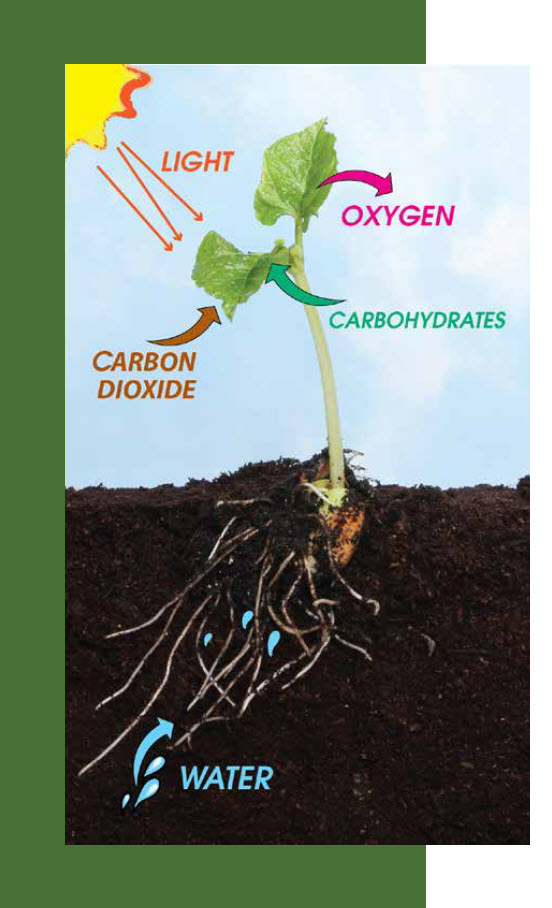
major phospholipids vital for cell membranes. Therefore, all plant and animal cells need choline to preserve their structural integrity.
Folic acid – folic acid as the foliar application can improve the growth and yield characteristics of rice plants under irrigation with drainage water.
Riboflavin: Riboflavin (vitamin B2) is one antioxidant regulating plant drought tolerance. Riboflavin (vitamin B2) is required for normal plant growth and development. Previous studies have shown that riboflavin application can enhance pathogen resistance in plants.
Biotin – Biotin biosynthesis is an indispensable procedure for plant growth and inhibition of the enzymes of the pathway is potentially an attractive target for herbicide development
AMINO ACIDS:
Amino Acids act as an energy source for all of the beneficial microbes in the rhizosphere to go to work for your plants.
1. Amino acids help photosynthesis
Amino acids play an important role in plant health, specifically in photosynthesis. Amino acids help to produce chlorophyll,
which is essential for quality photosynthesis. Without proper photosynthesis, plants will not grow. This makes amino acids an important part of ensuring plant health.
2. Amino acids help increase nutrient absorption
Plant leaves consist of stomata, and tiny pores that help plants absorb gas and nutrients. When there is no light and low humidity, the stomata will close to help to reduce Photosynthesis and absorption of nutrients. However, when the sky is clear and sunny and the humidity is higher, the stomata will open. This will help plants to get the proper nutrition from rain, sunlight, and soil. With a sufficient concentration of amino acids in the soil, L-glutamic acid is a type of amino acid that protects stomata cells with a microscope. This encourages the leaves to remain open, allowing the plants to absorb more nutrients. Amino acids are also known as having the ability to chelate when proteins are combined with other subnutrients. Plants can use sub-nutrients more efficiently. These benefits result in increased nutrient intake.
3. Amino acids reduce stress-related problems
The plant can withstand stress from high temperatures, low humidity, and other serious problems. Amino acids
help to fight stress and allow plants to recover quickly and maintain denser growth.
4. Amino acids support plant hormones
Amino acids also support the growth of plant hormones called phytohormones. The Phytohormones control the development of healthy plants by supporting tissues and cells. Almost all stages of plant growth are involved in hormonal control. The use of amino acids with soil can promote the production of phytohormones without having to use separate supplements.
5. Amino acids help improve microbial activity
Protein is essential for all living cells, including microbial cells that support healthy soil. L-methionine, one of the amino acids, can help increase the health of microbial cells and promote better microbial activity. One of the primary roles of microbes is to help circulate nutrients, including carbon, nitrogen, phosphorus, and sulfur. The actions of healthy microbes control these components. Without microbial activity, most fertilizer is not adequate. Microbes help convert organic compounds into inorganic forms, such as changing proteins from amino acids to carbon dioxide and ammonium. In general, microbes
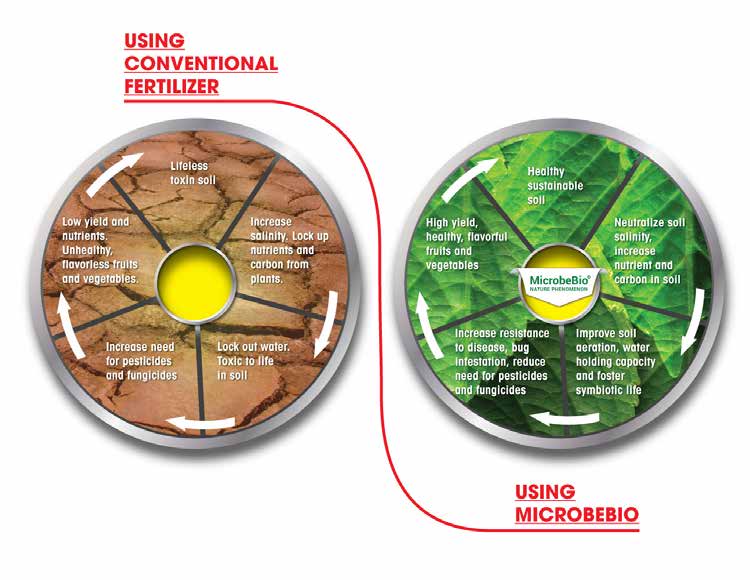
decompose compounds so that plants can absorb nutrients. Adding amino acids to the soil will improve this process.
6. Amino acids are a source of nitrogen
Adding amino acids to the soil can help increase nitrogen content by limiting the need for fertilizer with a high nutrient concentration. Plants can pick up amino acids from the soil to receive organic nitrogen. Amino acids are found naturally in the soil and can provide protein with nitrogen. However, to get nitrogen, Plants must first digest proteins, which must have microbial activity in the soil. Amino acids help improve microbial activity. Soil supplementation with this substance can help the entire nitrogen cycle. Amino acids are simple compounds that are essential to all living things. They are the building blocks of proteins, which are necessary for the growth and repair of tissues. In plants, they play a role in many
processes, including photosynthesis, respiration
7. Amino acids increase calcium absorption
Amino acids are known to increase the absorption of nutrients, and can also act as chelating agents. This means that they help to keep minerals in solution, making them more available for plants to absorb. Amino acids also play a role in plant health, by increasing calcium absorption and helping to strengthen the vascular
system. This allows plants to take up nutrients more, leading to healthier growth. When it comes to keeping your plants healthy, two important factors to consider are water and nutrients. By ensuring that your plants have adequate levels of both, you can help them resist pests and diseases. One way to promote plant health is by increasing the level of calcium in the soil. This can be done by adding lime to the soil or using a fertilizer that contains calcium. The extra calcium helps to thicken the cell walls of the plants, making them less susceptible to attack from pests and diseases. Additionally, increased calcium absorption helps prevent pests by making the plants less attractive to them. If your plants do become infested with pests or diseases, the extra calcium can also help them fight back. When these problems occur, plants.
Alanine – β-Alanine is a non-proteinogenic amino acid that has important roles in plant physiology and metabolism. It functions directly as a defense compound that helps plants withstand various stresses, such as hypoxia, waterlogging, and drought. Additionally, β-alanine serves as a precursor to the compounds pantothenate and CoA. Because of its multifunctional role in plant metabolism, β-alanine has great potential as a target for crop improvement strategies aimed at enhancing stress tolerance. Further research is needed to fully elucidate the mechanisms by which β-alanine
confers stress tolerance in plants and optimizes its use in agriculture. However, the existing body of evidence suggests that β-alanine could play a major
Arginine – L-arginine is an important and unique amino acid in plants. It serves not only as an important nitrogen reserve and recycling but also as a precursor of the biosynthesis of polyamines & nitric oxide.
Aspartic acid – Aspartic acid is obtained from a transamination reaction between glutamate and oxaloacetate in plants, and is metabolized to produce the amino acids lysine, threonine, methionine, and isoleucine, in a series of reactions known as the Aspartic acid metabolic pathway.
Cystine – The importance of cysteine for plants derives from its role as an amino acid in proteins but also because of its functions as a precursor for a vast number of essential bio-molecules, such as many plant defense compounds formed in response to different environmental adverse conditions.
Glutamic acid: L-Glycine and L-Glutamic Acid are critical components for chlorophyll production. L-Glycine and L-Glutamic can chelate metal ion nutrients and facilitate plant uptake and movement into cells. L-Tryptophan is a precursor in auxin synthesis used for root growth and development.
Histidine – Histidine (His) is one of the standard amino acids in proteins, and plays a critical role in plant growth and development. The chemical properties of the imidazole side group allow His to participate in acid-base catalysis and the coordination of metal ions.
Isoleucine – Application of Isoleucine Enhances Plant Resistance to B. cinerea.
L-carnitine: L-carnitine is a fundamental ammonium compound responsible for energy metabolism in all living organisms. It is an oxidative stress regulator, especially in bacteria and yeast, and lipid metabolism in plants. Besides its metabolic functions, l-carnitine has detoxification and antioxidant roles in the cells.
Lysine – In addition to serving as a building block of proteins, lysine is also a precursor for glutamate, an essential signaling amino acid that regulates plant growth and responses to the environment.
Methionine: It is well known that amino acids play an important role in plant development and growth.For example, L-methionine is a precursor to ethylene, which stimulates ripening in fruits. Similarly, L-arginine is a precursor to cytokinin production, which is involved in cell growth, axillary bud growth, and leaf senescence. In addition, pollination and fruit formation require high levels of various amino acids. Therefore, it is clear that
amino acids are essential for plants to thrive. However, the question remains: what is the best way to provide plants with the amino acids they need? One option is to use synthetic amino acids. Synthetic amino acids are man-made
Phenylalanine: Plants use phenylalanine as building blocks for compounds to attract pollinators for defense, reproduction, growth,
and development. While sufficient for those purposes, the amounts are small for human use. Phenylalanine production happens mainly in plastids and tiny organelles such as chloroplasts.
Proline – Proline, an amino acid, plays an essential role in plants. It protects plants from various stresses and helps them recover from stress more rapidly. 2. When applied exogenously to plants exposed to stress, Proline increases growth and other physiological characteristics.
Serine is a polar amino acid that plays a fundamental role in plant metabolism, development, and cell signaling. In addition to being a building block for proteins, Serine participates in the biosynthesis of biomolecules such as amino acids, nucleotides, phospholipids, and sphingolipids.

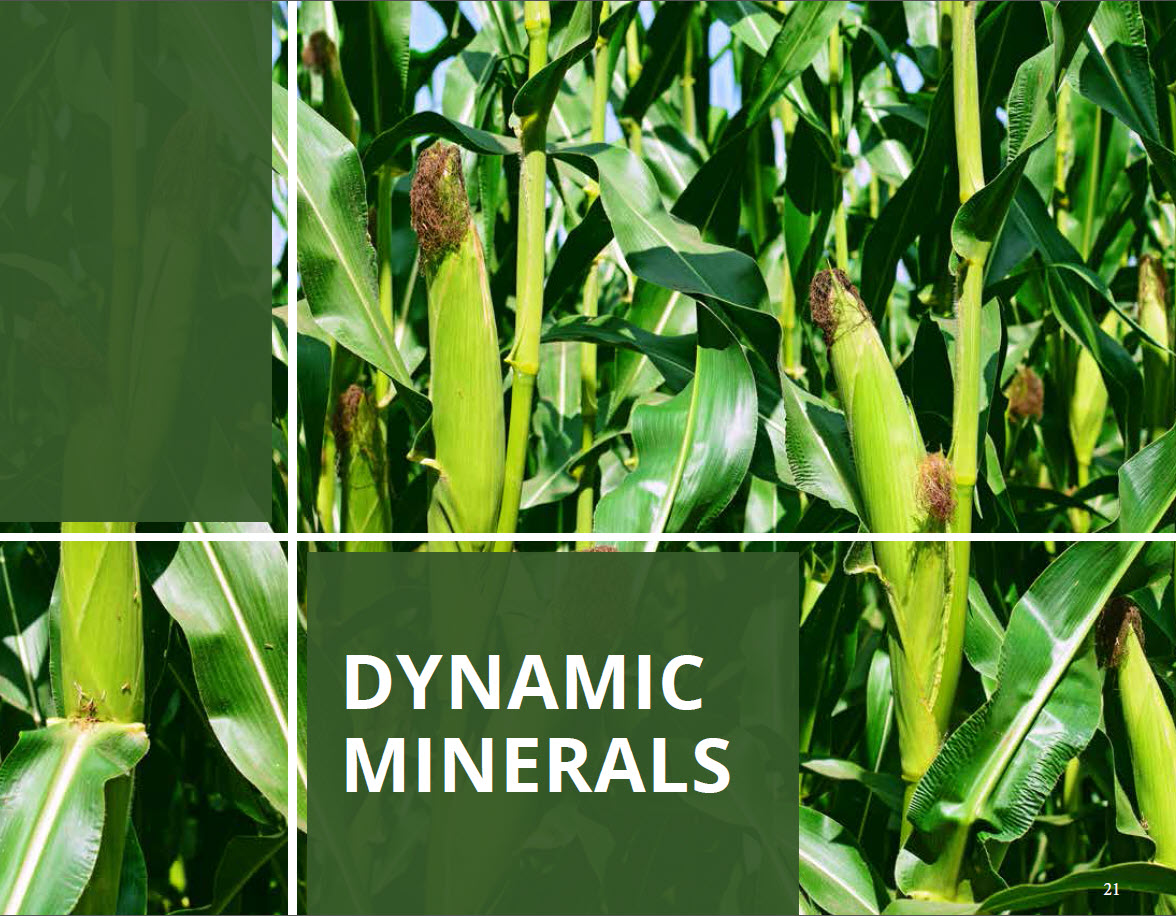
Threonine: Threonine deaminase provide plant defense against insect herbivore.
Tryptophan – Tryptophan has also been found to improve growth and photosynthetic capacity in plants. These results were suggested to be partially due to the modulation of cytokinin levels, as well as increasing auxin (IAA), gibberellic acid, and abscisic acid levels. Cytokinins are plant hormones that promote cell division, while auxins are plant hormones that promote cell growth. Gibberellic acid is a plant hormone that promotes growth, while abscisic acid is a plant hormone that inhibits growth. Therefore, by modulating these hormone levels, tryptophan can improve plant growth and photosynthesis.
Tyrosine – Tyr is an essential amino acid for plants, serving as a precursor for numerous specialized metabolites. These metabolites play important physiological roles, including electron carriers, antioxidants, attractants, and defense compounds. Tyr-containing metabolites are involved in a wide variety of plant processes, making this amino acid critical for plant health and development.
Valine: Valine is used to regulate plant growth and as an additional supply of nitrogen simultaneously (Hui et al., 2019). Nitrogen is closely related to the differentiation
of fruit organs and the formation of the tree structure.
Phosphorus – phosphorus can be key to plant wellness. It is responsible for assisting with the growth of roots and flowers and also helps plants withstand environmental stress and harsh winters.
Iodine – Based on phenotyping, genomics, and proteomics studies, it was shown that plants need iodine for timely flowering, increased seed production, biomass accumulation, and efficient photosynthesis (the process of converting sunlight into chemical energy in the leaf).
Iron: Iron helps carry other crucial elements throughout plants; circulatory systems. Chief among these is oxygen. Iron helps the plant move oxygen throughout the roots, leaves, and other parts of the plant, producing a green color that lets you know your plant is healthy.
Manganese – Manganese (Mn) is an essential micronutrient for plant growth and development. It sustains metabolic roles within different plant cell compartments, including the photosynthetic machinery’s oxygen-evolving complex (OEC). The metal is a cofactor for the water-splitting reaction in photosystem II (PSII), which is essential for photosynthesis. Manganese deficiency is a common problem in crop plants, especially in acidic soils. The symptoms of Mn deficiency include interveinal chlorosis, stunted growth, and reduced photosynthetic capacity. To prevent or mitigate Mn deficiency in plants, foliar application of Mn sulfate or other Mn-containing compounds is often used.
essential element for plant growth, but it has not been proven. There are no well-authenticated beneficial effects of arsenic on plants. Arsenic is chemically similar to phosphorus, an essential plant nutrient.
Molybdenum: Mo is primarily used in producing “molybdoenzymes” that regulate various plant functions. The most well-known of these Mo-containing enzymes hold nitrogen (N) nutrition. In non-legumes, Mo-enzymes regulate the conversion of nitrate into proteins (nitrate reductase).
Zinc: Zinc aids the synthesis of plant-growth substances and enzyme systems and is essential for promoting specific metabolic reactions, which are particularly critical in the early growth stages. As soil pH increases, zinc availability decreases.
Nickel – Nickel is an essential trace element for plants, playing a role in various enzymes and metabolic processes. One of the most important functions of nickel is the enzyme urease, which helps to metabolize urea nitrogen into ammonia. Without adequate nickel, plants can suffer from the accumulation of toxic levels of urea, leading to leaf tip necrosis. Nickel deficiency symptoms include stunted growth, yellowing leaves, and poor fruit and flower production. To prevent nickel deficiency, make sure to add organic matter to your soil and use a fertilizer that contains nickel. You
DYNAMIC MINERALS:
Calcium: Calcium (Ca) is critical in producing plant tissues, enabling plants to grow better. Calcium is responsible for holding together the cell walls of plants. It is also crucial in activating certain enzymes and sending signals that coordinate certain cellular activities.
Silicon: Besides a structural role, silicon may protect plants from insect attack, disease, and environmental stress by improving the plant defense response. For some crops, silicon fertilization of soils increases crop yield even under favorable growing conditions and without disease.
Nitrogen – Nitrogen is also a component of the chlorophyll molecule, which enables the plant to capture sunlight energy by photosynthesis, driving plant growth and grain yield. Nitrogen plays a critical role within the plant to ensure energy is available when and where it needs it to optimize output.
Selenium – In adequate amounts, selenium has been found to have several positive effects on plants, including An increased tolerance to environmental stressors, such as drought and salinity stress. A decrease in the uptake of toxic metals and the dangerous effects of those metals on plants. Improved plant development.
Titanium – Ti can be applied to crops either through the roots or leaves, and at low concentrations, it has been shown to improve crop performance. This is thought to be due to Ti’s stimulation of certain enzymes, enhancement of chlorophyll content and photosynthesis, promotion of nutrient uptake, strengthening of stress tolerance, and improvement of crop yield and quality. All of these effects work together to make crops healthier and more productive. In addition, because Ti is a natural element, it is not harmful to the environment.
Cobalt: Co plays a vital role in interaction with iron (Fe), nickel (Ni), and zinc (Zn) in maintaining cellular homeostasis. Like other essential micronutrients, plants respond to Co concentrations in soil: at low concentrations, it promotes plant growth but causes phytotoxicity at higher concentrations.
Copper – Copper activates some enzymes in plants involved in lignin synthesis, which is essential in several enzyme systems. It is also required in photosynthesis, is vital in plant respiration, and assists in plant metabolism of carbohydrates and proteins.
Antimony – At low concentrations, could modestly promote the growth of some plant species, and its toxicity only acts at high concentrations.
Arsenic: It could, therefore, well be that arsenic is an
can also apply foliar sprays containing nickel sulfate or chelated nickel to your plants.
Aluminum – In different plant species, nitrogen (N), phosphorous (P), and potassium (K) uptake has been considered the mechanism responsible for the stimulation of root growth induced by Al.
Scandium – Scandium improves stomatal regulation and enhances salt and drought stress tolerance by upregulating antioxidant responses.
Lanthanum – Increases Water Consumption and Concentrations of Sugars, Proteins, and Chlorophylls. Low La concentrations stimulated an increase in chlorophyll index, resulting in a slight increase in shoot biomass. Silver – Ionic colloidal silver is not only used to kill bacteria, fungi, and viruses in plants and humans, but more importantly, colloidal silver can also prevent crop-borne pathogens from devastating your crop in the first place.
Uranium – Fertilizers can contain elevated levels of uranium, thorium, and potassium-40. One factor that impacts the amount of radioactivity in the fertilizer is its nitrogen, phosphorous, and potassium content. This facilitates the breeding of hardier plant varieties. This is done by exposing them to radiation and selecting
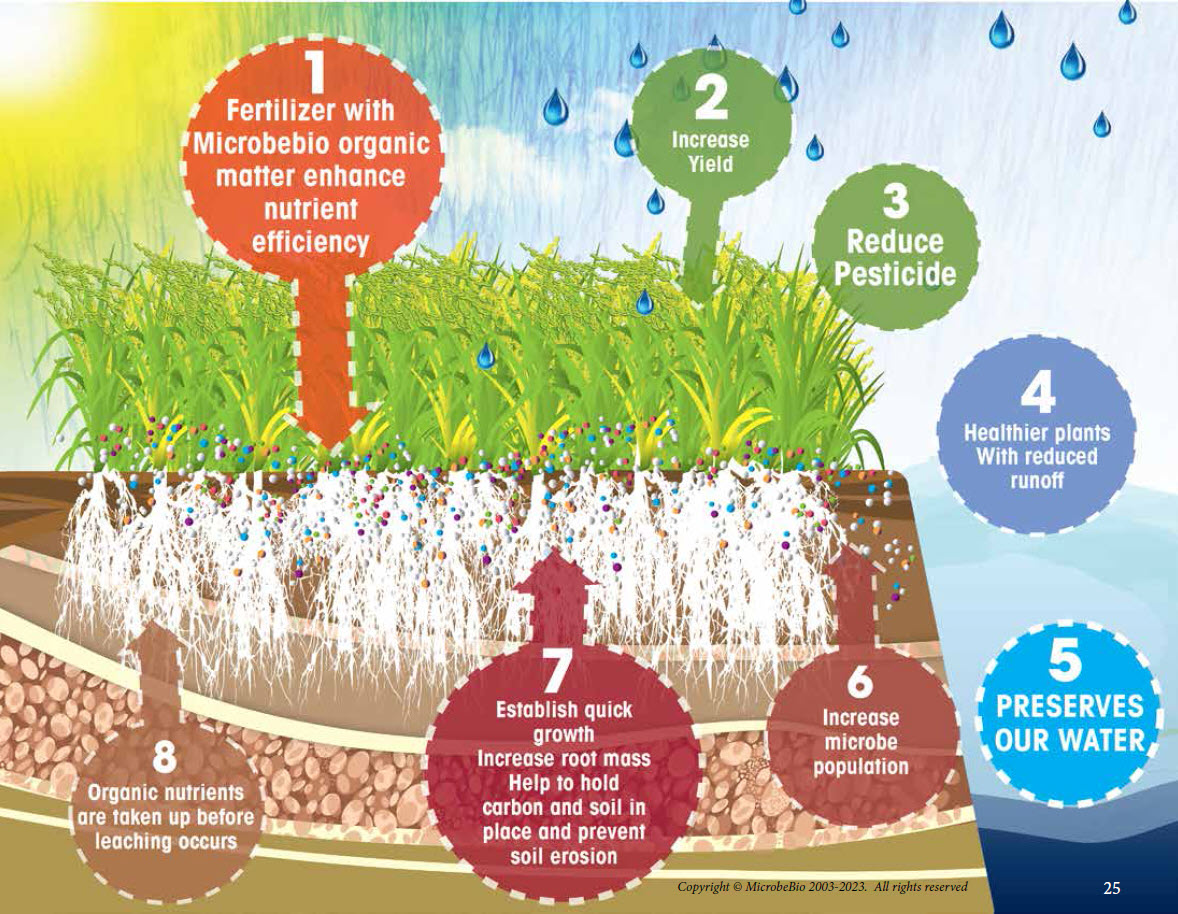
mutations that make them more likely to survive and flourish; for example, by better withstanding drought conditions or providing higher levels of nutrition.
Gallium – Beneficial effects on the growth of rice seedlings were found by adding Ga to culture solutions.
Vanadium – Vanadium stimulates pepper plant growth and flowering, increases concentrations of amino acids, sugars, and chlorophylls, and modifies nutrient concentrations.
Cerium – Cerium enhances germination and shoot growth and alters mineral nutrient concentration in rice increasing yield.
Dysprosium – Has been shown to have positive effects on metabolic nutrients, photosynthesis, and stress resistance of plants.
Holmium – Has been shown to have positive effects on metabolic nutrients, photosynthesis and stress resistance of plants.
Thulium – Has been shown to have positive effects on metabolic nutrients, photosynthesis, and stress resistance of plants.
Erbium – Has been shown to have positive effects
pyrenoidosa. These disturbances arise in the same range of V-concentrations as the known positive effects of the trace metal. The mechanisms underlying these effects are not fully understood, but they may be related to alterations in the cell’s metabolism. Further research is needed to elucidate the precise nature of these relationships. Vanadium’s toxic effects on cells may result in DNA damage and chromosomal abnormalities. These changes can lead to cancerous growth and other health problems. continued exposure to high levels of
vanadium may also cause liver and kidney damage.
Magnesium: Magnesium is the central core of the chlorophyll molecule in plant tissue. Thus, if Mg is deficient, and the shortage of chlorophyll results in poor and stunted plant growth. Magnesium also helps to activate specific enzyme systems.
Zinc – Zinc is an essential mineral for plant growth. It is involved in the formation of chlorophyll, auxins (growth regulators), and some carbohydrates. Zinc also helps plant tissue withstand cold temperatures. Zinc deficiency can lead to a number of problems, including stunted growth, poor leaf development, and reduced fruit and flower production. Zinc deficiencies are most common in alkaline soils or those with high levels of phosphorus. To prevent zinc deficiency, it is important to have your soil tested regularly and to apply zinc-containing fertilizers as needed. If you suspect that your plants are deficient
Potassium – Humates are an excellent way to improve plant growth and increase drought tolerance. They help build cellulose, reduce lodging, and activate enzymes involved in plant growth. Humates also aid in photosynthesis and food formation, helping to translocate sugars and starches. This results in plants that are rich in starch and have increased protein content. By using humates, growers can see an overall improvement in plant health and yield. Microbes play an important role in agriculture by providing essential nutrients and promoting tolerance to environmental stress conditions. Plant-associated microbiomes are expected to increase plant adaptability and high yield in agriculture. Joining Microbebio can help increase agricultural productivity while also reducing your carbon footprint. Microbebio is committed to good environmental stewardship and sustainability, while not sacrificing yield and crop quality, making it a great choice for those looking to improve their agricultural practices.
on metabolic nutrients, photosynthesis, and stress resistance of plants.
Ytterbium – Has been shown to have positive effects on metabolic nutrients, photosynthesis, and stress resistance of plants.
Sodium – Sodium is not an essential element for plants but can be used in small quantities, similar to micronutrients, to aid in the metabolism and synthesis of chlorophyll.
Titanium – Ti fertilizer can help improve crop performance in a number of ways. For example, it can stimulate the activity of certain enzymes, enhance chlorophyll content and photosynthesis, promote nutrient uptake, strengthen stress tolerance, and improve crop yield and quality. When applied via roots or leaves at low concentrations, Ti fertilizers can help correct deficiencies and boost plant growth. In addition, Ti-based products can be used as foliar sprays to prevent or control various diseases. Ti fertilizer can provide a number of benefits to crops, including increased chlorophyll content and photosynthesis, enhanced nutrient uptake, strengthened stress tolerance, and improved yield and quality. These advantages make Ti fertilizer an ideal choice for farmers seeking to improve their crops.
Vanadium – At elevated concentrations, vanadium reveals toxic influences on the cell division of Chlorella
in zinc, you can also try applying a foliar spray of zinc sulfate or another zinc-containing fertilizer.
Calcium – Calcium is an essential plant nutrient. As the divalent cation (Ca2+), it is required for structural roles in the cell wall and membranes, as a counter-cation for
inorganic and organic anions in the vacuole, and as an intracellular messenger in the cytosol.
Sulfur: It is used in the formation of amino acids, proteins, and oils. It is necessary for chlorophyll formation promotes nodulation in legumes and helps develop and activate certainly enzymes and vitamins, and is a structural component of two of the 21 amino acids that form protein.
Selenium: In adequate amounts, selenium has been found to have several positive effects on plants, including An increased tolerance to environmental stressors, such as drought and salinity stress. A decrease in the uptake of toxic metals, as well as in the dangerous effects of those metals on plants. Improved plant development.
Copper – Copper (Cu) is one of eight essential plant micronutrients. Copper is required for many enzymatic activities in plants, chlorophyll, and seed production. A deficiency of copper can lead to increased susceptibility to diseases like ergot, which can cause significant yield loss in small grains.
Microbio commitment We define environmental stewardship as the responsibility for environmental quality shared by our actions that affect the environment. At Microbebio, we have an exceptionally unique line of products that function synergistically to completely restore the soil, greatly increase yield and protect crops from harmful diseases and pests. Our patent-pending organic growing program will maximize your success. Think of MicrobeBio products like this – We’re the health food of plant food, and we’re here to put an end to all of the horticultural junk food that has been shoved down Mother Nature’s gullet for far too long. You might say that MicrobeBio has taken the very best of Mother Nature and put it into a concentrated form, and as all-natural products should be, we never use growth hormones or GMOs, never irradiate, and we never use any chemicals that are harmful to humans, livestock, or the planet.
WE HOPE THAT YOU WILL JOIN US IN CREATING A LIFESTYLE OF BOTH HEALTH AND SUSTAINABILITY, A BILLION MICROBES AT A TIME.
